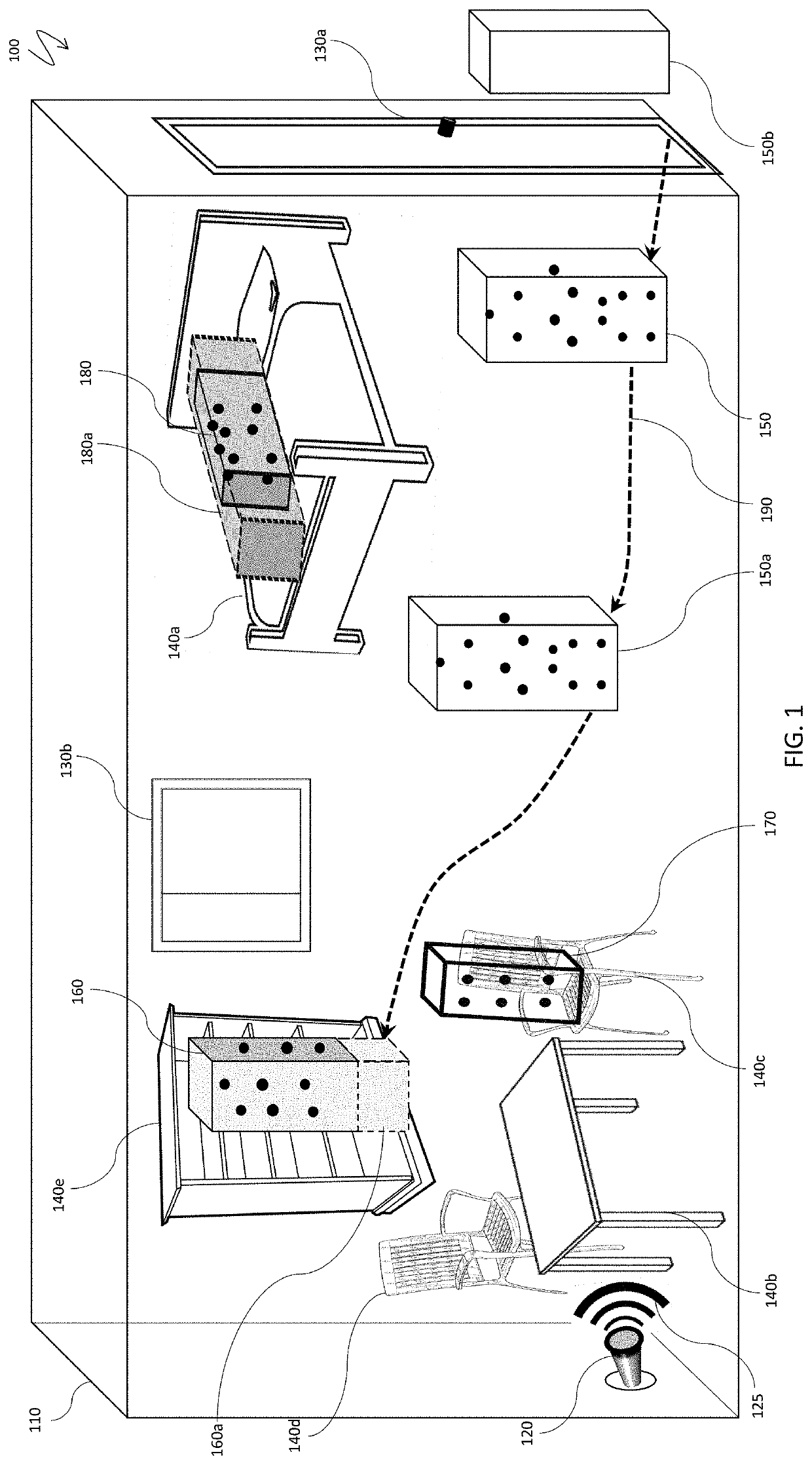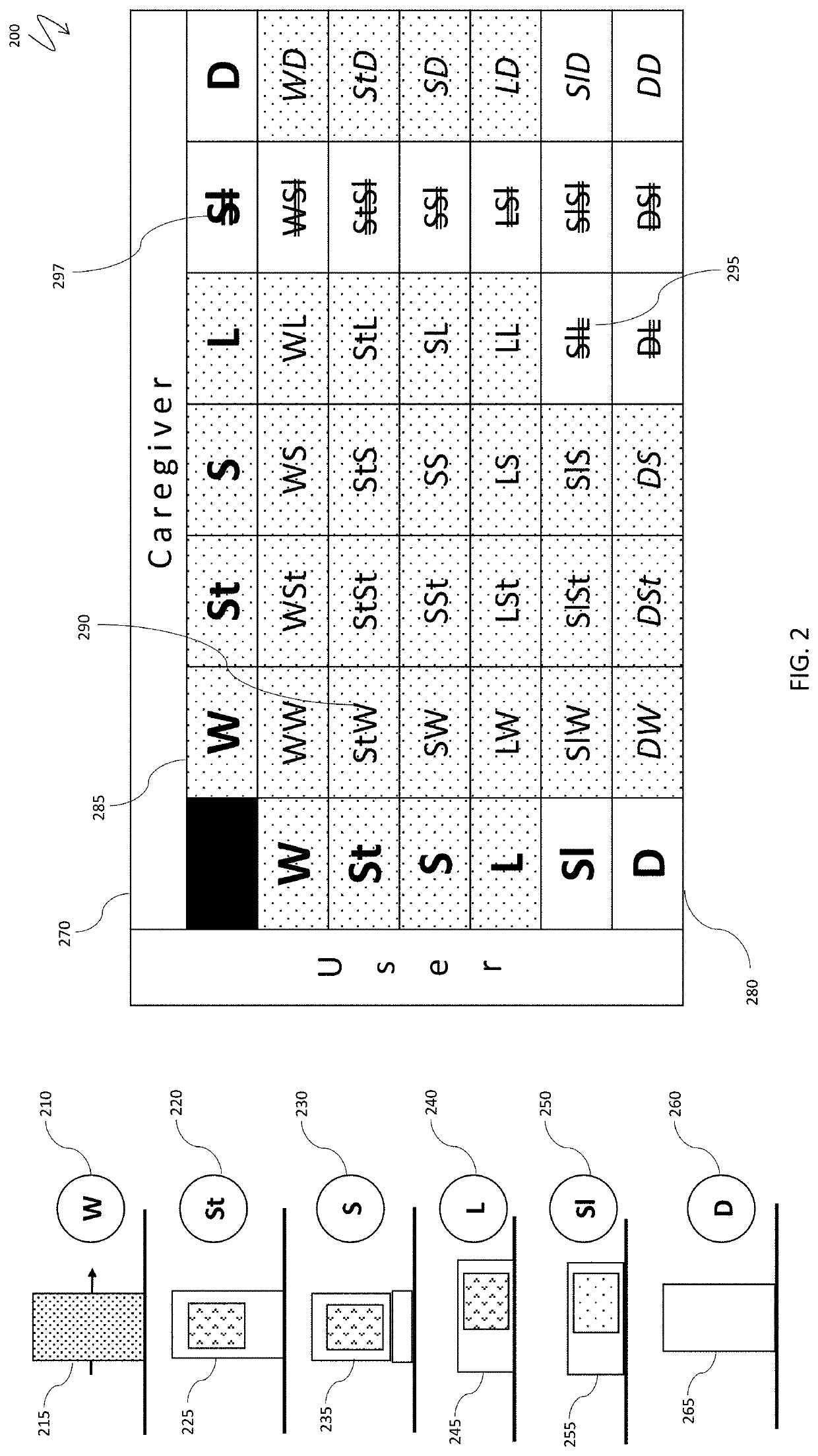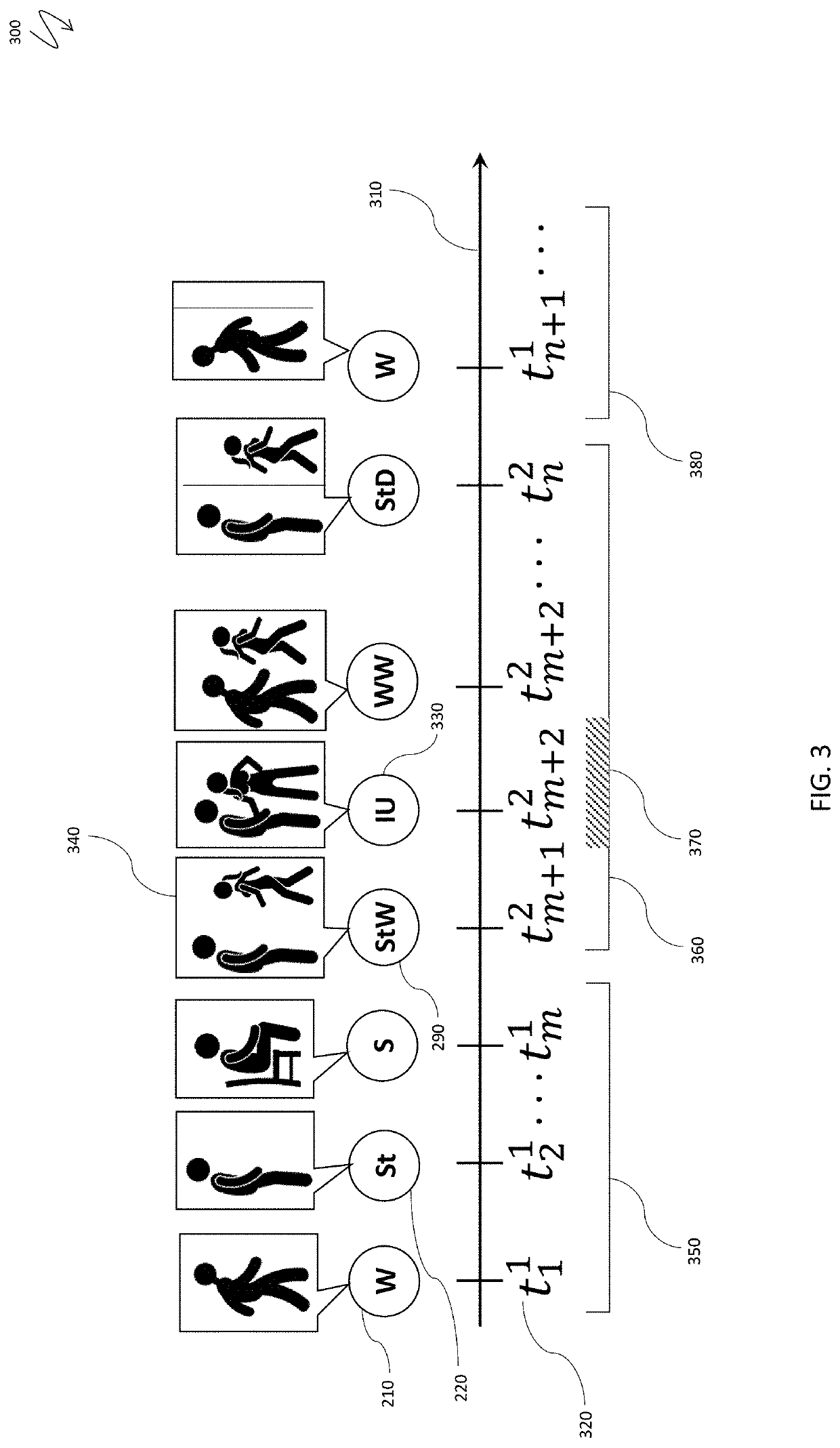Non-contact identification of multi-person presence for elderly care
a non-contact identification and elderly care technology, applied in the field of remote monitoring of multi-person presence, can solve the problems of system not being able to make a firm determination of multi-person presence and/or mutual state based solely on a combined, and system may have difficulty in detecting multi-person presen
- Summary
- Abstract
- Description
- Claims
- Application Information
AI Technical Summary
Benefits of technology
Problems solved by technology
Method used
Image
Examples
Embodiment Construction
lass="d_n">[0051]The system described herein provides a continuous identification of multi-person presence in a facility based on geometric analysis, clustering and dynamic tracking of one or multiple point clouds, and monitoring mutual states of multiple users, including uncertain states.
[0052]FIG. 1 is a schematic illustration 100 of a furnished room with a non-contact tracking device and point clouds for different user states. A room 110 with a non-contact tracking device 120 emitting a radar signal 125 has a door 130a, a window 130b and is furnished with a bed 140a, a table 140b, a couple of chairs 140c, 140d and a bookcase 140e. A user starts from an outside position 150b, enters the room 110 and walks across the room 110 along a path 190 to the bookcase 140e. The tracking device 120 captures user movement, generating a sequence of point clouds 150, 150a, 160. Note the absence of points captured by the tracking device 120 in the cuboid 160a because of a static standing position...
PUM
 Login to View More
Login to View More Abstract
Description
Claims
Application Information
 Login to View More
Login to View More - R&D
- Intellectual Property
- Life Sciences
- Materials
- Tech Scout
- Unparalleled Data Quality
- Higher Quality Content
- 60% Fewer Hallucinations
Browse by: Latest US Patents, China's latest patents, Technical Efficacy Thesaurus, Application Domain, Technology Topic, Popular Technical Reports.
© 2025 PatSnap. All rights reserved.Legal|Privacy policy|Modern Slavery Act Transparency Statement|Sitemap|About US| Contact US: help@patsnap.com



